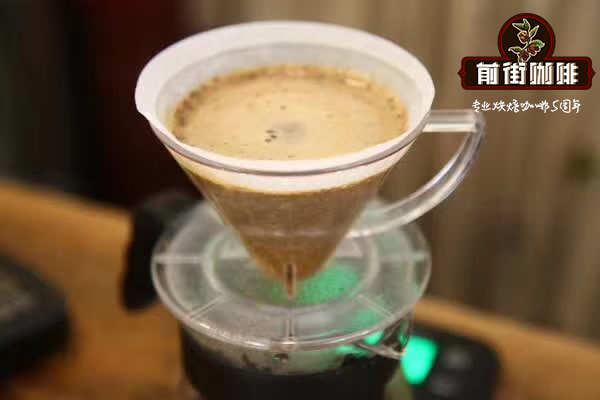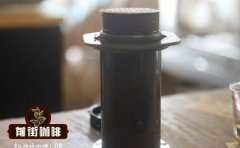Ethiopia West Dharma coffee beans and candle coffee beans flavor taste characteristics of the difference story
There are eight major coffee producing areas in Ethiopia: Lekempti, Limu, Illubabor, Djimmah, Harar, Teppi/Bebeka, Sidamo and Yirgacheffe.
Ethiopian coffee is highly rated in China, especially the Chinese people are particularly interested in and love the producing areas of Sidamo and Yirgacheffe in Ethiopia. Sidama province is located in the south of Ethiopia, with Arsi province in the north, Bale province in the east and Gamu Gofa province in the west.
The Ethiopian administrative region is divided into four grades, the order from big to small is Region, Zone, woreda and kebele. Most of the names of raw coffee beans follow this rule. For example, Sakui, which is located in the southeast of Yejia Sheffield, the coffee producing area of Sidamo, belongs to the administrative division of Oromia Region → Guji Zone Guji → Shakisso woreda Shakiso → Hambella Hambella.
Guji Guji Zone was established as an independent production area by ECX (Ethiopia Commodity Exchange) in 2010 because of its superior geographical location and cup flavor. Shaqisuo is the most attractive micro-producing area in the Guji producing area, located in the southeast of Yega Snow, with an average elevation of more than 1800 meters above sea level.
Huakui coffee beans belong to a single farm system (we temporarily call them Single Farm Project, referred to as SFP)
Huakui Coffee producing area: Guji Guji, Shakisso,Hambella Humbela
At present, there are about 20 processing plants of various sizes in Hambella producing areas. Hongshun, as a coffee raw bean company in Ethiopia coffee producing area, has set up four sun treatment plants in Ethiopia in cooperation with GUJI zone Hambella since 2016, and conducted a series of studies on sun treatment methods using high quality coffee varieties in the region during the 17x18 production season. There are four manor processing plants in the core production area of Hambella, namely, "Dire" church treatment plant, "mansa" mountain pond treatment plant, "Bobea" red flag treatment plant and "Goro baessa" mountain spring treatment plant. Goro baessa is a small village surrounded by mountains at an altitude of 2280 meters. December is its coffee harvest season. Whenever the mountains are covered with red and mature coffee cherry, the village is neatly arranged on African tanning beds. This is where Sakuran deals with it.
The Huakui 2.0 we tasted came from the micro-batch of the Shanquan treatment plant. Compared with last year's local hybrid "Sakui", "Sakui 2.0" has a more consistent bean shape and a cleaner handling. After cup test and evaluation, this year's "Sakuran" not only has a bit of rich and enchanting flower aroma, mellow red wine and tropical fruit flavor, but also a bit of transparent fruit juice sweet and sour.
Drima Zede candle
Production areas: 90+SNNP, Sidama (Sidamo), ETHIOPIA (Ethiopia)
According to the recently updated map of 90 +, there are 8 SNNP producing areas:
Joseph Brodsky founded Ninety Plus (90 +) in 2006.
90+ adopts a cooperative model with the local manor, with complete control from planting, sampling and harvesting to subsequent processing and cup testing. 90 + exclusive Profile Processing ensures that each coffee bean has a unique and stable flavor trend and quality, while 90 + coffee is unique in the market with the marketing method like high-end red wine.
The 90 + company began to buy the most wonderful coffee cherries from Ethiopian coffee farmers, and started with the best ready-made beans, so there were 90 + representative beans: Aricha and Beloya, which became famous in the first world war, but the experimental results were amazing, and the whole boutique coffee circle was shocked by the rich fruit flavor and high texture.
later
The product line is divided into four series: NinetyPlus Ethiopia, NinetyPlus Panama, Ninety Levelup and NinetyPlus Limited.
At first, the candle appeared in the public eye with 90 + cards, taking the price of being close to the people.
Candlelight coffee raw beans are slightly gray, some places are thick and some places are small, the acidity is soft and strong, mellow and light, sweet and spicy
Unlike ordinary African coffee, Sidamo has clear acidity, smooth taste and delicate floral smell. With a hint of citrus, oak and vanilla, the flavor of tropical fruits such as nectarine is more obvious.

Important Notice :
前街咖啡 FrontStreet Coffee has moved to new addredd:
FrontStreet Coffee Address: 315,Donghua East Road,GuangZhou
Tel:020 38364473
- Prev

Brazilian coffee bean price economy Brazilian Arabica coffee variety bourbon coffee bean flavor performance
Professional coffee knowledge exchange more coffee bean information Please follow Coffee Workshop (Wechat official account cafe_style) Brazil is vividly compared to the giant and monarch of the coffee world, because it is the world's largest coffee producer and exporter, accounting for about 1/3 of the world's annual coffee output and the world's second largest coffee consumer after the United States. My day is from opening with coffee.
- Next

Limited Coffee Introduction to Santa Yin Estate Brazil Coffee Flavor Introduction to Santa Yin Estate Brazil
Professional coffee knowledge exchange More coffee bean information Please pay attention to coffee workshop (Weixin Official Accounts cafe_style) This cup of coffee won 95.85 points in COE competition, and can only be bought at auction every year. Santa Yin sets the record for the highest score in the history of the Cup of Excellence competition. It is also a heavyweight estate of Sertao Group. The estate grows coffee in the history of super.
Related
- Detailed explanation of Jadeite planting Land in Panamanian Jadeite Manor introduction to the grading system of Jadeite competitive bidding, Red bid, Green bid and Rose Summer
- Story of Coffee planting in Brenka region of Costa Rica Stonehenge Manor anaerobic heavy honey treatment of flavor mouth
- What's on the barrel of Blue Mountain Coffee beans?
- Can American coffee also pull flowers? How to use hot American style to pull out a good-looking pattern?
- Can you make a cold extract with coffee beans? What is the right proportion for cold-extracted coffee formula?
- Indonesian PWN Gold Mandrine Coffee Origin Features Flavor How to Chong? Mandolin coffee is American.
- A brief introduction to the flavor characteristics of Brazilian yellow bourbon coffee beans
- What is the effect of different water quality on the flavor of cold-extracted coffee? What kind of water is best for brewing coffee?
- Why do you think of Rose Summer whenever you mention Panamanian coffee?
- Introduction to the characteristics of authentic blue mountain coffee bean producing areas? What is the CIB Coffee Authority in Jamaica?

